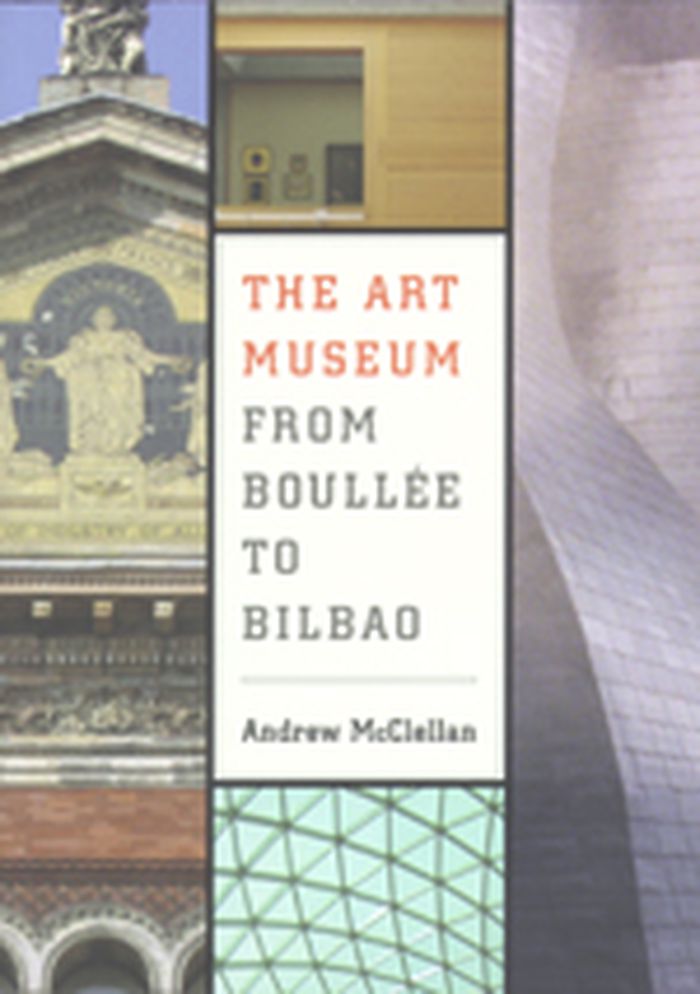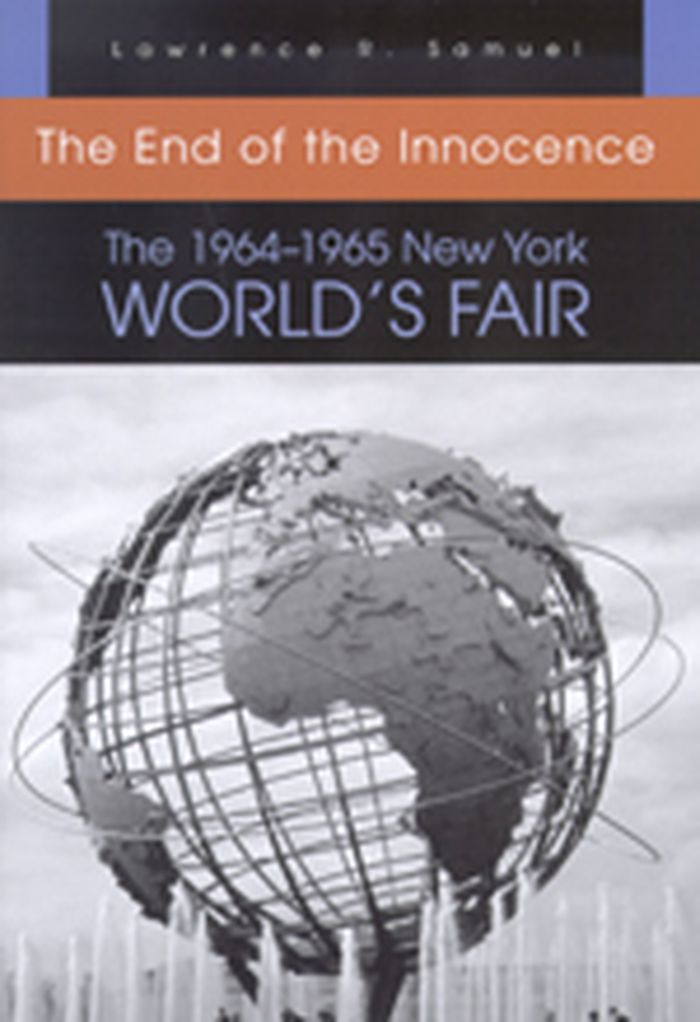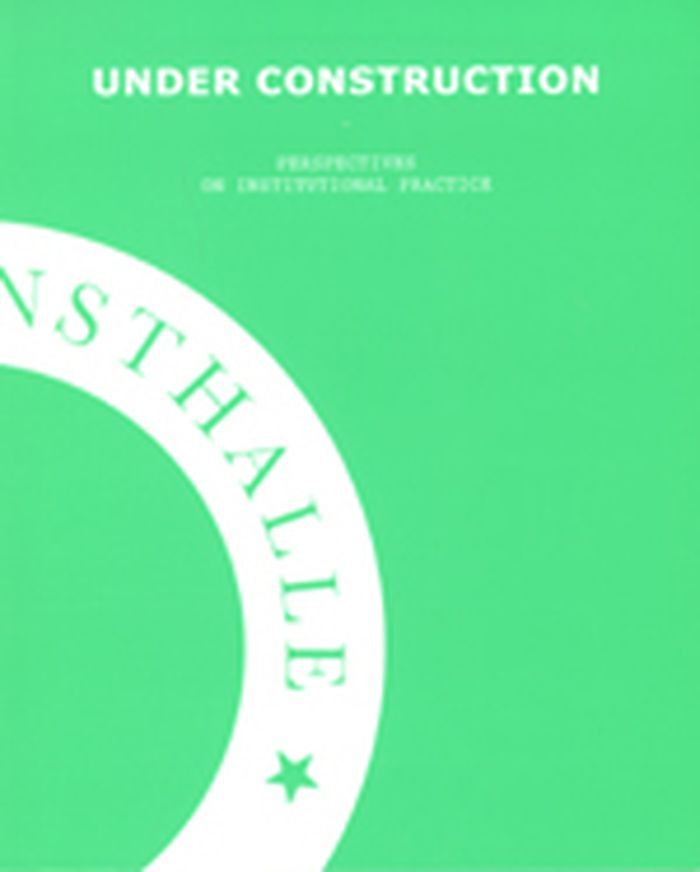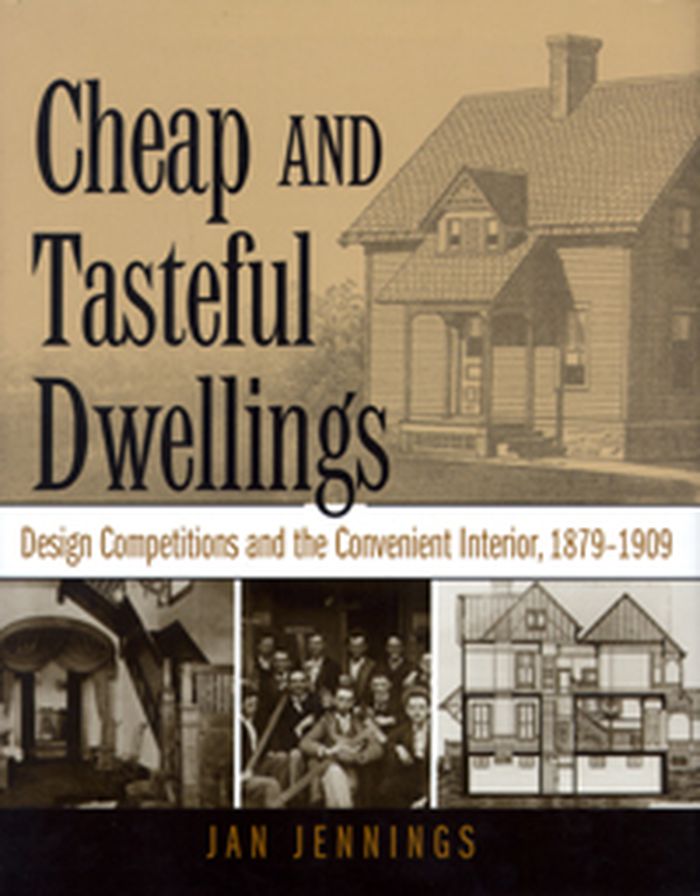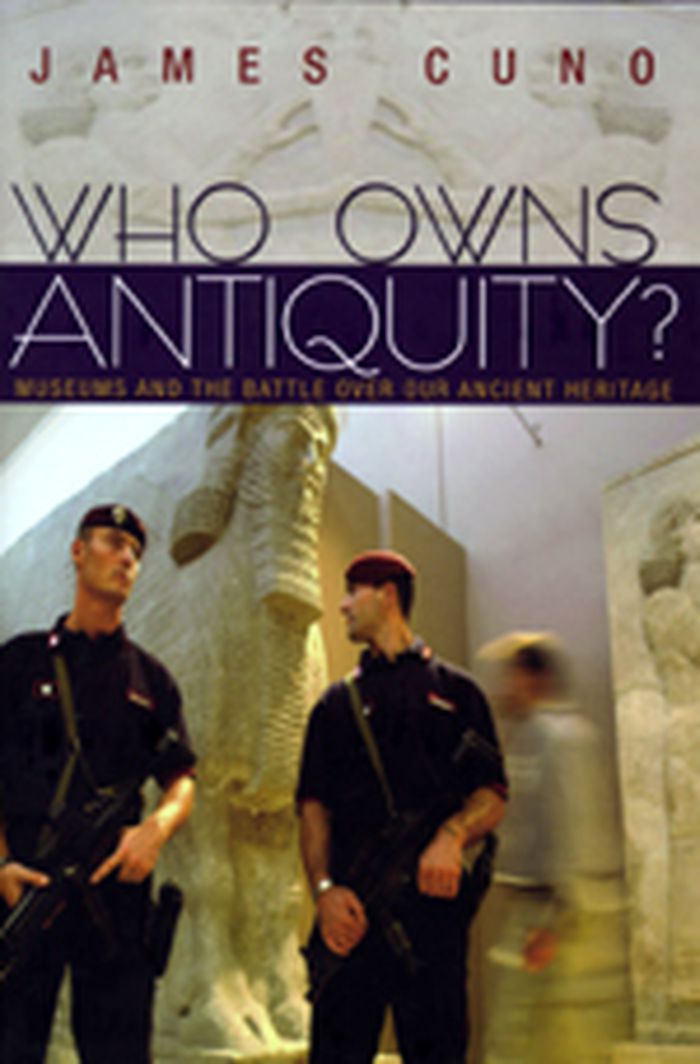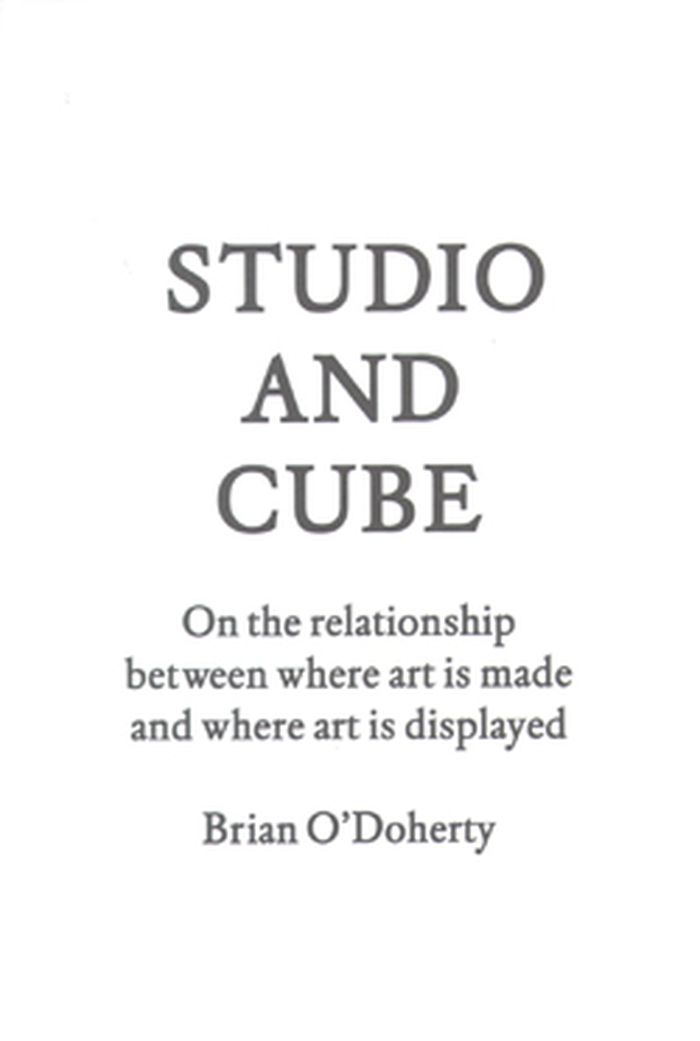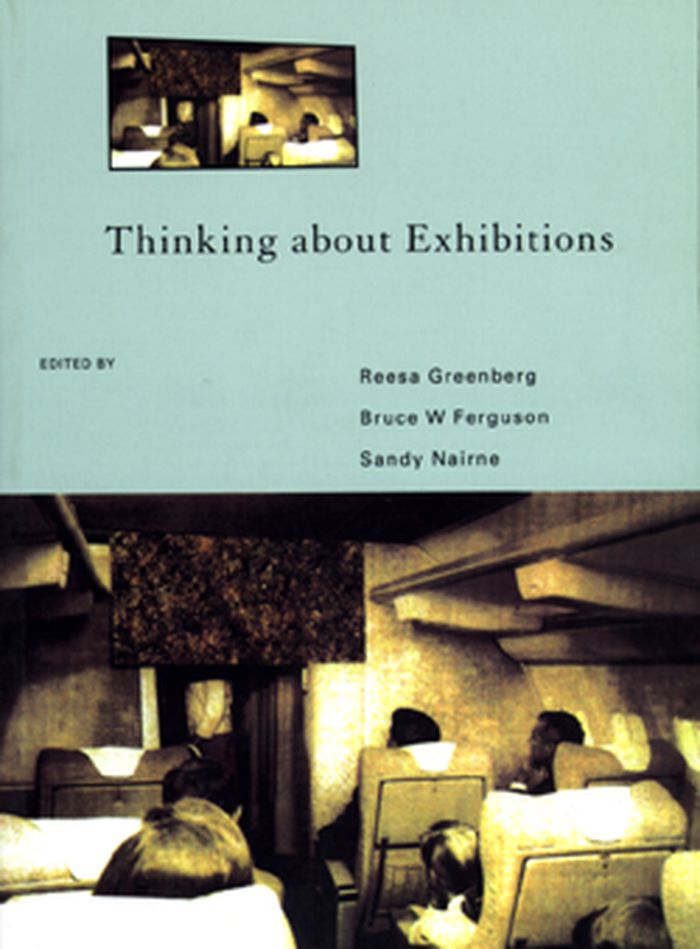$34.95
(disponible sur commande)
Résumé:
Art museums have emerged in recent decades as the most vibrant and popular of all cultural institutions. Though art museums have never been more popular, their direction and values are now being contested as never before, both in the media and in the art world itself. This engaging thematic history of the art museum from its inception in the eighteenth century to the(...)
The Art Museum from Boullée to Bilbao
Actions:
Prix:
$34.95
(disponible sur commande)
Résumé:
Art museums have emerged in recent decades as the most vibrant and popular of all cultural institutions. Though art museums have never been more popular, their direction and values are now being contested as never before, both in the media and in the art world itself. This engaging thematic history of the art museum from its inception in the eighteenth century to the present offers an essential framework for understanding contemporary debates as they have evolved in Europe and the United States. From the visionary museums of Boullée in the eighteenth century to the new Guggenheim in Bilbao and beyond, it explores key aspects of museum theory and practice: ideals and mission; architecture; collecting, classification, and display; the public; commercialism; and restitution and repatriation. The only single volume to give a comprehensive account of the issues critical to museums, the book also highlights the challenges they will face in the future.
Muséologie
$34.95
(disponible sur commande)
Résumé:
From April to October in 1964 and 1965, some 52 million people from around the world flocked to the New York World's Fair, an experience that lives on in the memory of many individuals and in America's collective consciousness. Lawrence R. Samuel offers a thought-provoking portrait of this seminal event and of the cultural climate that surrounded it, countering critics'(...)
octobre 2007, Syracuse
The end of innocence : The 1964-1965 New York world's fair
Actions:
Prix:
$34.95
(disponible sur commande)
Résumé:
From April to October in 1964 and 1965, some 52 million people from around the world flocked to the New York World's Fair, an experience that lives on in the memory of many individuals and in America's collective consciousness. Lawrence R. Samuel offers a thought-provoking portrait of this seminal event and of the cultural climate that surrounded it, countering critics' assessment of the Fair as the "ugly duckling" of global expositions. Although much attention has been paid to the controversial role of Fair president Robert Moses, who tried to use the event to ensure his personal legacy, the Fair itself was for the great majority of visitors an overwhelmingly positive, often inspirational, and sometimes transcendent experience that truly delivered on its theme of "peace through understanding." Much of the Fair's popularity, Samuel suggests, stemmed from its looking backward as much as forward, offering visitors sanctuary from the cultural storm that was rapidly approaching in the mid-1960s. Opening just five months after President Kennedy's assassination, the Fair allowed millions to celebrate international brotherhood while the conflict in Vietnam came to a boil. The Fair glorified the postwar American dream of limitless optimism just as a counterculture of sex, drugs, and rock 'n' roll was coming into being. It was, in short, the last gasp of the American Dream: The End of the Innocence.
$27.00
(disponible en magasin)
Résumé:
Museums, galleries, foundations, collectors, artists, viewers--how do they all come together? How is that changing? This collection of essays and some photographs from a Cologne working group called European Kunsthalle tackles the fundamental issues facing new initiatives and institutions for contemporary art. It is divided into five topics: The Problem of Location, The(...)
Under Construction : perspectives on institutional practice
Actions:
Prix:
$27.00
(disponible en magasin)
Résumé:
Museums, galleries, foundations, collectors, artists, viewers--how do they all come together? How is that changing? This collection of essays and some photographs from a Cologne working group called European Kunsthalle tackles the fundamental issues facing new initiatives and institutions for contemporary art. It is divided into five topics: The Problem of Location, The Process of Societal Transformation, Cultural Economies, Curatorial Concepts, and, most ambitiously of all, The Way in Which the Art System Operates. Articles and discussion transcripts include "The Crisis of the Audience," "The Cultural Politics of Institutions," "Smuggling: A Curatorial Model," "The Power and Powerlessness of the Private Collector" and Liam Gillick's "Revised Construction of One."
Muséologie
$56.50
(disponible sur commande)
Résumé:
In 1879, Carpentry and Building magazine launched its first house design competition for a cheap house. Forty-two competitions, eighty-six winning designs, and a slew of near winners and losers resulted in a body of work that offers an entire history of an architectural culture. The competitions represented a vital period of transition in delineating roles and(...)
Cheap and tasteful dwellings: design competitions and the convenient interior, 1879-1909
Actions:
Prix:
$56.50
(disponible sur commande)
Résumé:
In 1879, Carpentry and Building magazine launched its first house design competition for a cheap house. Forty-two competitions, eighty-six winning designs, and a slew of near winners and losers resulted in a body of work that offers an entire history of an architectural culture. The competitions represented a vital period of transition in delineating roles and responsibilities of architectural services and building trades. The contests helped to define the training, education, and values of “practical architects” and to solidify house-planning ideals. The lives and work of ordinary architects who competed in Carpentry and Building contests offer a reinterpretation of architectural professionalization in this time period.
Muséologie
livres
$32.50
(disponible sur commande)
Résumé:
"Museum frictions" is the third volume in a series on culture, society, and museums. "Museum frictions" is an illustrated examination of the significant and varied effects of the increasingly globalized world on contemporary museum, heritage, and exhibition practice. The contributors — scholars, artists, and curators —present case studies drawn from Africa, Australia,(...)
Muséologie
janvier 2007, Durham, London
Museum frictions : public cultures / global transformations
Actions:
Prix:
$32.50
(disponible sur commande)
Résumé:
"Museum frictions" is the third volume in a series on culture, society, and museums. "Museum frictions" is an illustrated examination of the significant and varied effects of the increasingly globalized world on contemporary museum, heritage, and exhibition practice. The contributors — scholars, artists, and curators —present case studies drawn from Africa, Australia, North and South America, Europe, and Asia. Together they offer a multifaceted analysis of the complex roles that national and community museums, museums of art and history, monuments, heritage sites, and theme parks play in creating public cultures. Whether contrasting the transformation of Africa’s oldest museum, the South Africa Museum, with one of its newest, the Lwandle Migrant Labor Museum; offering an interpretation of the audio guide at the Guggenheim Bilbao; reflecting on the relative paucity of art museums in Peru and Cambodia; considering representations of slavery in the United States and Ghana; or meditating on the ramifications of an exhibition of Australian aboriginal art at the Asia Society in New York City, the contributors highlight the frictions, contradictions, and collaborations emerging in museums and heritage sites around the world. The volume opens with an extensive introductory essay by Ivan Karp and Corinne A. Kratz, leading scholars in museum and heritage studies.
livres
janvier 2007, Durham, London
Muséologie
Who owns antiquity?
$24.95
(disponible sur commande)
Résumé:
Whether antiquities should be returned to the countries where they were found is one of the most urgent and controversial issues in the art world today, and it has pitted museums, private collectors, and dealers against source countries, archaeologists, and academics. Maintaining that the acquisition of undocumented antiquities by museums encourages the looting of(...)
Who owns antiquity?
Actions:
Prix:
$24.95
(disponible sur commande)
Résumé:
Whether antiquities should be returned to the countries where they were found is one of the most urgent and controversial issues in the art world today, and it has pitted museums, private collectors, and dealers against source countries, archaeologists, and academics. Maintaining that the acquisition of undocumented antiquities by museums encourages the looting of archaeological sites, countries such as Italy, Greece, Egypt, Turkey, and China have claimed ancient artifacts as state property, called for their return from museums around the world, and passed laws against their future export. But in Who Owns Antiquity?, one of the world's leading museum directors vigorously challenges this nationalistic position, arguing that it is damaging and often disingenuous. "Antiquities," James Cuno argues, "are the cultural property of all humankind," "evidence of the world's ancient past and not that of a particular modern nation. They comprise antiquity, and antiquity knows no borders." Cuno argues that nationalistic retention and reclamation policies impede common access to this common heritage and encourage a dubious and dangerous politicization of antiquities--and of culture itself. Antiquities need to be protected from looting but also from nationalistic identity politics. To do this, Cuno calls for measures to broaden rather than restrict international access to antiquities. He advocates restoration of the system under which source countries would share newly discovered artifacts in exchange for archaeological help, and he argues that museums should again be allowed reasonable ways to acquire undocumented antiquities. The first extended defense of the side of museums in the struggle over antiquities, Who Owns Antiquity? is sure to be as important as it is controversial.
Muséologie
livres
$42.00
(disponible en magasin)
Résumé:
The focus of this issue of icamprint is on the 'market' for private archives. After all, collecting and managing the documentation of architecture history to conform to academic and scientific standards is a complex business, and a core task for most icam members. In this context, whether or not the 'originals' by star architects have an artistic value on the market is(...)
icam print 02 december 2007 International confederation of architectural museums
Actions:
Prix:
$42.00
(disponible en magasin)
Résumé:
The focus of this issue of icamprint is on the 'market' for private archives. After all, collecting and managing the documentation of architecture history to conform to academic and scientific standards is a complex business, and a core task for most icam members. In this context, whether or not the 'originals' by star architects have an artistic value on the market is only superficially a decisive issue. If one considers the lengths taken by the custodian's of Le Corbusier's estate to secure a suitable new home for what is without doubt a painting of artistic note, and so a market value and with it a place in an art history context, then it is worth waiting to see the place conceded on the art market one day to project-related sketches and drawings by contemporary star architects. The whole history of the conception and realisation of important works of architecture within a context of culture history ought to feature more prominently in the collection policy of icam members to ensure its suitability for research purposes. It remains to be seen what price is attributed to these comprehensive documents, these convolutes, in the competition between private collectors. This notwithstanding, the 'market' for collecting is just as crucial to icam members as the continuing debate on 'originals', and safeguarding them in times of digital architecture production. icamprint will focus increasingly on these and related issues, opening the discussion to all of the member institutions, to develop into an indispensable medium providing orientation on key issues for all icam members.
livres
octobre 2007, Vienna
Muséologie
$24.95
(disponible sur commande)
Résumé:
In Punctuation: Art, Politics, and Play, Jennifer DeVere Brody places punctuation at center stage. She illuminates the performative aspects of dots, ellipses, hyphens, quotation marks, semicolons, colons, and exclamation points by considering them in relation to aesthetics and experimental art. Through her readings of texts and symbols ranging from style guides to digital(...)
Punctuation: Art, Politics, and Play
Actions:
Prix:
$24.95
(disponible sur commande)
Résumé:
In Punctuation: Art, Politics, and Play, Jennifer DeVere Brody places punctuation at center stage. She illuminates the performative aspects of dots, ellipses, hyphens, quotation marks, semicolons, colons, and exclamation points by considering them in relation to aesthetics and experimental art. Through her readings of texts and symbols ranging from style guides to digital art, from emoticons to dance pieces, Brody suggests that instead of always clarifying meaning, punctuation can sometimes open up space for interpretation, enabling writers and visual artists to interrogate and reformulate notions of life, death, art, and identity politics.
Muséologie
$34.95
(disponible sur commande)
Résumé:
When does an artist's creation become art, and where? Does it occur in the solitary confines of an artist's studio or does it require the context of an art gallery's white cube? What is the relationship between these two culturally charged spaces? How does the site of art's presentation shape the meaning and determine even the very possibility of its existence?
Studio and Cube: on the relationship between where art is made and where at is displayed
Actions:
Prix:
$34.95
(disponible sur commande)
Résumé:
When does an artist's creation become art, and where? Does it occur in the solitary confines of an artist's studio or does it require the context of an art gallery's white cube? What is the relationship between these two culturally charged spaces? How does the site of art's presentation shape the meaning and determine even the very possibility of its existence?
Muséologie
Thinking about Exhibitions
$51.95
(disponible sur commande)
Résumé:
The essays investigate exhibitions in settings outside of the traditional gallery as well as innovative work in extending cultural debates within the museum. Texts have been grouped in sections which focus on the history of the exhibition, forms of staging and spectacle, and questions of curatorship, spectatorship and narrative.
Muséologie
décembre 1995, London, New York
Thinking about Exhibitions
Actions:
Prix:
$51.95
(disponible sur commande)
Résumé:
The essays investigate exhibitions in settings outside of the traditional gallery as well as innovative work in extending cultural debates within the museum. Texts have been grouped in sections which focus on the history of the exhibition, forms of staging and spectacle, and questions of curatorship, spectatorship and narrative.
Muséologie
